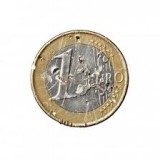Printing and minting euro coins and notes
Have you ever wondered what happens to old Euro coins and Euro banknotes when they get damaged or worn out? The European Central Bank has to maintain a balance of the physical amount of currency in circulation and this includes the tricky job of knowing what to keep and what to destroy.
All Euro banknotes wear out or get damaged at some point. As well, of course as the ones we lose. (Not a happy day to lose any bank note!)
I guess it’s pretty obvious that banknotes will wear out faster than any Euro coins. The average lifecycle for a Euro banknote is around 18 months to 2 years.
As cash is handed over the counter at banks (and other cash handling centres) the notes and coins are sorted and any ones that are damaged or worn are returned to the central bank in that country. These are then sent in bulk to the European Central Bank (ECB). These are then destroyed by incinerating the notes in special furnaces in very secure conditions.
With Euro coins the life cycle is usually around 20 to 30 years (however this can be a lot longer in some cases). Again damaged (or garbled coins as they are called in the trade) are sent to the ECB who arranges for the coins to be marked in specially designed machines and then sold as scrap metal.
In each country the national or central bank is in charge of minting coins with their own national design on one side of the coin. In the manufacturing of Euro coins a circular blank is stamped out of a metal sheet. It’s then softened (with heat) and the one, two and five cent coins are then covered in a copper coating. The design is then stamped on the surface using 2 coining dies. With €1 and €2 Euro coins they are constructed using two different metals that are put together at the same time as the design is stamped onto the surfaces. (This makes them harder to fake).
If you have any leftover Euro coins that you want to change into Sterling then please contact us. We exchange all Euro coins (and banknotes) into cash.
Send your coins to us now




















